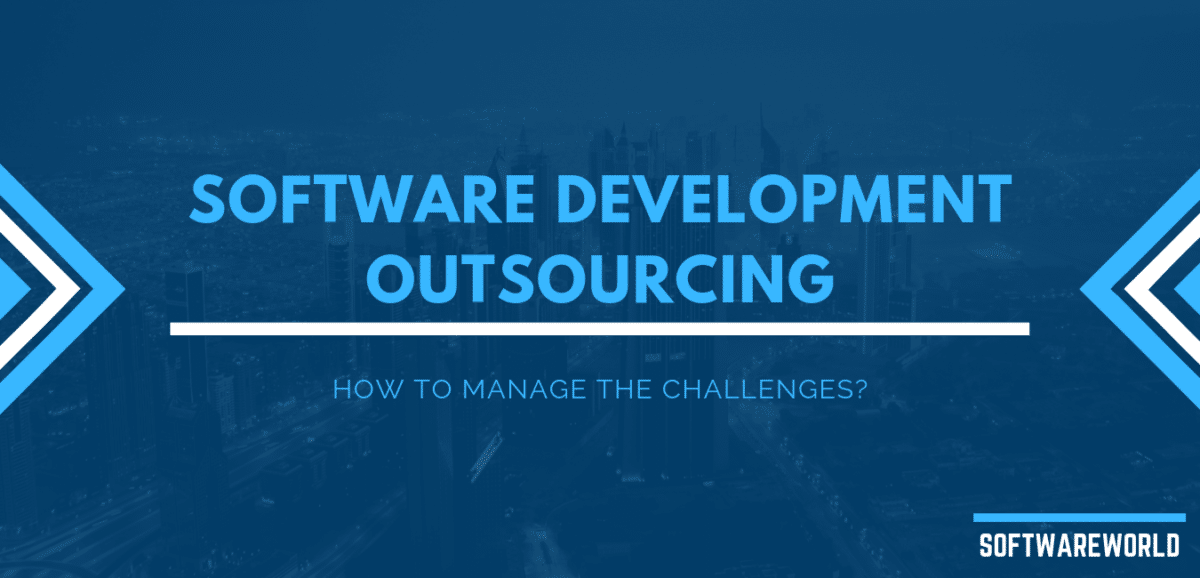Software development outsourcing has become common practice not only among multinational corporations but among start-ups and SMEs as well. What started as a way to optimize corporate spending in the 1970s, has developed into a standard today.
What hasn’t changed is that outsourcing is still prone to challenges regarding project management, communication, and safety. We have, however, developed best practices and methodologies to thwart these obstacles.
No matter if you run an enterprise project, or want to reduce the burn rate at your start-up, software development certainly has its pros. To avoid the cons, learn how to manage challenges bound to outsourcing IT projects.
1. Project Management Issues
Two of the most common concerns – and challenges – regarding outsourcing software development are meeting deadlines and/or the budget. How can you trust that an IT company will deliver your project on-time, on-budget, and of good quality?
› Choose what to outsource
When outsourcing a project, your team can remain partial to its development. Recognize your team’s strengths and weaknesses, and outsource the work you can’t do, handling the rest in-house.
Another scenario may be that you need developers to deliver a given feature, so hiring them in-house would be a waste of time and money. In this case, it is better to find a remote team specifically for this job, which will also positively affect your burn rate.
› Make the scope clear
First of all, the better you describe what your project is about, the better the chance it will meet your goals and business objectives. Ideally, you should be very specific outlining your project while asking for an estimate – only then can the IT company set a realistic timeframe.
What also helps, is having a kick-off meeting, where you and your vendor can discuss the project. During this meeting, you will define the project in detail, set the team, and objectives. Another useful document to have is the Statement of Work (SoW), that will also specify deliverables.
Finally, define acceptance criteria – they will help you decide when your software meets the objectives.
› Be a part of the process
You don’t have to be a project manager, but you can (and should) be a part of the development process. The reason for this is simple – you are the person who best understands the idea, its target audience, and goals behind the project.
Given the timeframe and development cost, it’s also better to spot misalignments early on, so the vendor can fix them right away.
So, how can you become a part of the process? Attending meetings or calls with the development team is the best way to stay in the loop. Agree on weekly or bi-weekly meetings, through which the team will inform you of the status of your project.
Another idea is to have a project manager in your team – this approach is advisable if you handle part of the design or development at your organization. In this way, the person could adjust the work of your team with the development delegated to the vendor.
2. Time Zones
Outsourcing software development gives you the possibility of finding talented programmers from any part of the globe. This advantage, though, has its cons, as it will require you to cooperate with teams from different time zones.
A significant challenge that comes with working within different hours is being able to adapt to changes quickly. What if your company is located in London, while the development team works from Asia? If they would have any problem, you can respond only a few hours later – assuming that you don’t work at nights.
You can solve this issue by deciding on nearshoring – it is an outsourcing tactic based on hiring a contractor from neighboring countries, a similar time zone, or a time zone close to yours with many overlapping work hours. This way, you can maintain contact with the team while they work so that you can respond to their questions quickly.
3. Cultural differences
Learning and understanding the impact cultural differences may have on your project delivery can be challenging. These differences can include work culture, communication, or even things like national holidays.
When it comes to working habits, it’s essential to learn about the business culture before outsourcing. What is typical for the country from which you’re considering to hire a company? What is similar to your business culture, and what is different?
Communication, on the other hand, requires you to learn about interaction methods of a given country. Some cultures speak more broadly, avoid criticism, or can be easy to offend, while others speak more directly, which may seem rude. Knowing these subtleties will make it easier for you to get the message across, successfully.
4. Language Proficiency
Communication may seem the most difficult part of hiring a team from another country. As you’ve already read, it requires you to match working hours, communication style, agree on communication tools, etc. Most importantly, however, you need to find a team that speaks your language fluently to avoid miscommunication.
For English speaking countries, it is vital to find a tech partner that uses this language as a second language on at least moderate or high level. This way, you will ensure that you understand one another correctly, which is particularly crucial at the beginning when describing the project’s deliverables and acceptance criteria.
To find a company with good English proficiency, you can start more broadly – by looking at country profiles. A very useful resource is the English Proficiency Index, which ranks countries by their level of English-language education. Then, you can search for companies in that country to find your vendor.
5. Trust Issues
With software development outsourcing comes another challenge - trust. Finding an IT company from another country will often require you to confide in a team you may not even meet in-person, communicating only via emails and communication tools such as Skype.
An advisable thing to do is to secure your idea with agreements regarding the cooperation. In such arrangements, you should state who is responsible for software delivery, what is the scope, what are acceptance criteria, the timeframe and budget, as well as the eventual financial consequences for the vendor in case of not meeting these requirements.
To secure your idea, you can also sign a Non-disclosure Agreement (NDA). It forces the vendor to not disclose any information about your project outside of their company.
Summary
Outsourcing software development is today a common practice, allowing businesses to reduce operational costs, but also to find talented programmers for their projects. The latter is especially important, as we’re now facing a severe shortage of developers worldwide, with studies indicating that this gap won’t close shortly.
When looking for an IT company to deliver your project, you need to bear in mind the common challenges listed in this article, regarding project management, culture, communication, and securing your project.
By overcoming these challenges or spotting misalignments between you and the potential vendor, you can avoid the risk of having your project delivered over-time, over-budget, or of sub-par quality. Successful software development is possible with a remote IT company, but it requires following proper methodologies and best practices on both sides.
YOU MAY ALSO LIKE
› World’s Top 50+ Mobile App Development Companies
› Top 30+ Mobile App Development Companies
› World’s Top 20+ Web Design & Development Companies
› World’s Top 20+ Digital Marketing Agencies


